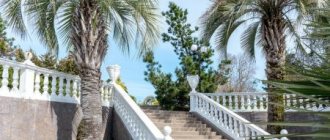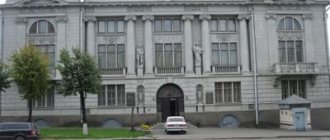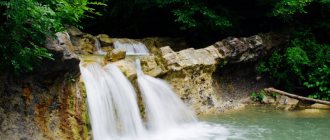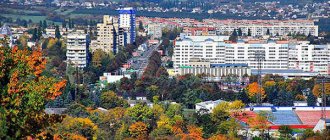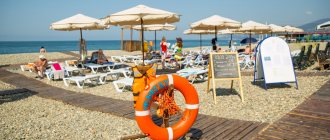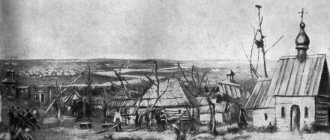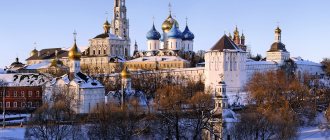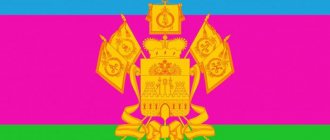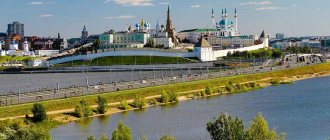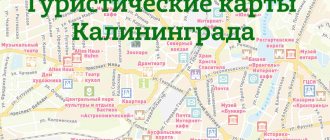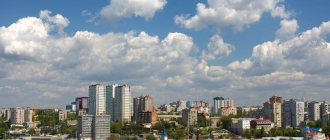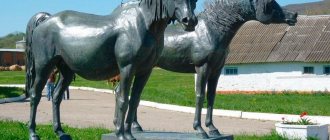Zaragoza is a city in north-eastern Spain, which is located on the banks of the Ebro River and is the capital of the autonomous region of Aragon. Zaragoza is the fifth largest city in Spain and has a rich, centuries-old history. We offer you a selection of the best attractions of Zaragoza with photos and descriptions that will help you not to miss the most important tourist spots in the city.
In the 1st century BC, during the colonization of the Iberian Peninsula, a new settlement was founded by the Romans on the site of present-day Zaragoza. It was called Colonia Caesaraugusta or Colony of Emperor Caesar Augustus. This is where the modern name of the city comes from. By the way, among the attractions of Zaragoza there are also ancient Roman monuments. In 712-713, Zaragoza was conquered by the Arabs and was recaptured by the Spaniards only in 1118 during the Reconquista.
City of Zaragoza (Spain)
Zaragoza is a city in northeastern Spain, the capital of the Aragon region and the province of the same name. Situated on the Ebro River in the center of a wide valley. Zaragoza is a treasure trove of historical and cultural treasures that are truly worth seeing: ancient Roman ruins, majestic ancient churches, beautiful Mudejar palaces and museums with masterpieces by Francisco Goya, Serrano and Pablo Gargallo.
Zaragoza is a charming, warm city conveniently located between Madrid, Barcelona, Bilbao, Valencia and Toulouse. It is one of the largest cities in Spain in terms of population and economy. Zaragoza beckons with its rich culture, shopping, delicious food and ancient sites. It is a city with 2,000 years of history that preserves one of the greatest historical and artistic heritages on the Iberian Peninsula.
Nature and entertainment
Park Grande
The huge park in the center of Zaragoza is decorated with fountains, marble sculptures and figured benches. Walking alleys, jogging paths, and picnic areas are equipped under the trees. The park contains a Botanical Garden that introduces coniferous and deciduous trees, shrubs, flowers, medicinal herbs, and spices. There is a café and a children's playground with carousels on site. At the entrance there is a pond with a clepsydra - a water clock.
Embankment of the Ebro River
The city is crossed by a small beautiful river. The central promenade is easy to find near the Basilica of Our Lady of Pilar. The picturesque coast, paved with stone slabs, is a suitable place for romantic and family walks. Trees are planted along the road, benches and fruit stalls are installed, and cafes operate. People come here to admire the view of the river, take photos, or go rollerblading.
Aquarium
The modern, spacious building houses the largest European river aquarium. It presents the fauna of the Nile, Amazon, Ebro, Mekong, Murray-Darling. Adults and children can see piranhas, giant groupers, guppies, arawana, and flathead catfish. In a special zone live crocodiles, snakes, guinea pigs, and swamp beavers. Tourists are invited to listen to an interesting lecture, attend fish feeding and attend educational master classes.
Somos el Parque de Atracciones
The amusement park opened in Zaragoza in 1974. Among the trees there are 40 attractions. The Ferris Wheel, Vertical Twister, Pacific Ocean Express, Chains, Ramses, and Revolution are extremely popular. For the little ones there are trampolines, sandboxes, and a traditional carousel in the shape of animals. Visitors to the park ride boats on the local pond, enter the Cave of Horrors, the Room of Mirrors, and the Magnetic House.
Pignatelli Park
A small but cozy park stretching along Paseo de Cuellar Avenue, designed for leisurely walks in the shade of trees. Wide alleys are lined with square stone slabs.
In the center there is a small square with a monument to Ramon Pignatelli, a Spanish politician who took an active part in the creation of the Aragon Imperial Canal project. In addition, the park contains a stone bust of Jose Maria Ferrera and a wall painted by city artists.
Geography and climate
Zaragoza is located in the middle reaches of the Ebro, about 300 km from the capital of Spain, Madrid. The Huerva and Gallego rivers also flow through the city. The average altitude above sea level is about 200 m. Zaragoza has a cold, semi-arid climate. Winters here are quite cool with frequent light frosts. Summer is dry and hot. There is very little precipitation per year - about 400 mm, most of which falls in April-May and October-November.
Panorama of Zaragoza
A stone bridge
The deepest river in Spain, the Ebro, has a very capricious character. This can be seen even on the map - its source is located a few kilometers from the Atlantic Ocean, but the Ebro flows not in the immediate direction, but through the entire peninsula, into the Mediterranean Sea. The length of the river makes spills and floods unpredictable - rain can fall in the Logroño area, and bridges can be demolished in Zaragoza.
Bridges in the city were built by trial and error. They were constantly carried away by the daring river, but people built crossings again and again. In the 15th century, the problem seemed to be solved - a major stone bridge was built. But in 1643, a flood simply washed away the two central spans. The bridge was restored only 16 years later. Then the banks around it were strengthened, the cutwaters at the base of the bridge were expanded, and in this form it connects the banks of the Ebro to this day.
In 1991, a pair of lions were placed at the ends of the bridge, and they are trying to call the bridge the Lion Bridge, but the townspeople, in the old fashioned way, call it the Stone Bridge.
Story
Zaragoza was founded by the Romans, who named the settlement Colonia Caesaraugusta. The name means "Colony of Emperor Augustus". At first, veterans of the Cantabrian wars settled here. Zaragoza soon became the most important urban center of the middle Ebro Valley. In 380, a general Christian synod took place here.
At the beginning of the 8th century, Zaragoza was conquered by the Arabs. From that time on, the city was part of the Caliphate of Cordoba and was an important Moorish stronghold in the fight against the Spanish kings. After the collapse of the Cordoba Caliphate, Zaragoza became the center of an independent Moorish state. In 1118 the city was conquered by the king of Aragon and Navarre and became the capital of the kingdom.
Ebro River
In the 15th century, after the unification of Spain, Zaragoza lost its importance, while remaining one of the most important and largest cities in the northeast. During the Napoleonic Wars the city became famous for its heroic defense against the French. In the 20th century, Zaragoza's economy began to develop rapidly thanks to industrialization.
Park Grande José Antonio Labordeta in Zaragoza
The most beautiful city park in the south of Zaragoza was designed at the beginning of the 20th century. on the initiative of the city council with the participation of the former Spanish dictator Primo de Rivera, after whom it was named. In 2010, after the death of the Spanish politician, poet and singer and native of Zaragoza, the park became known as Parque Grande José Antonio Labordeta .
Parque Grande José Antonio Labordeta
On the main alley of the Paseo de San Sebastian park, reminiscent of Versailles with its fountains and gardens, stands a grandiose monument to Alfonso I the Warrior, who liberated Spain from Moorish rule. The monument was erected in honor of the 800th anniversary of this event.
Monument to Alfonso I the Warrior
As noted above, two branches of the Zaragoza Museum are located in two mansions in the park. On the territory of the park there is a city botanical garden, founded in the 18th century. In 1928, on the centenary of Goya’s death, the Rincon de Goya pavilion was built in the park, intended to serve as his museum. There are many monuments and busts of famous Spaniards in the park. The surfaces of some benches are lined with beautiful tiled mosaics.
How to get there
Zaragoza Airport is located 10 km from the city center. In 2008, a new terminal was built. Airplanes from Alicante, Brussels, London, Rome, Paris, Frankfurt and other cities in Spain and Europe arrive at this air port. You can get from the airport to the city by bus, train and taxi.
High-speed trains from Barcelona and Madrid run regularly to Zaragoza. Regular trains connect the city with Bilbao and Valencia. There are regular bus services to major cities in north-eastern and central Spain.
Streets of Zaragoza
Fountain of Hispanidad in Zaragoza
In the center of the Plaza de Catedrales is the famous fountain Fuente de la Hispanidad , built to commemorate the 500th anniversary of the discovery of America by Columbus. The collection of 23 Spanish-speaking countries with a population of 400 million is commonly called Hispanidad. The structure resembles a waterfall rather than a fountain. On its surface is a map of Latin America. From the northern part of the complex hydraulic structure, powerful water streams rush into the reservoir of the lower part, the contours of which follow the continental ones.
Fountain of Hispanidad
The composition of Fuente de la Hispanidad includes three marble slabs located near the fountain, symbolizing Columbus's ships reaching America, and a large stone globe with its map according to medieval ideas.
Food
Zaragoza is famous for its gastronomy and tapas. Here are some typical Aragonese dishes:
- Bacalao al Ajoarriero - cod with garlic and eggs.
- Huevos al Salmorejo - eggs with tomato cream.
- Longanizas y Chorizos is a local type of sausage.
- Ternasco Asado - roasted lamb.
- Pollo al Chilindrón - chicken in a sauce with tomatoes, onions and paprika.
- Cordero a la Pastora is a lamb dish.
- Migas a la Aragonesa is a dish with egg and spicy pork sausage (chorizo).
- Borrajas are a local vegetable with olive oil.
- Melocotón con vino - peaches in wine.
At night on the streets of Zaragoza
What and where to eat
Photo: Milk lamb (ternasko)
The main ingredient of Aragonese cuisine is meat, but fish and other seafood are also in use. The most popular and revered local dish is milk lamb (ternasko), which melts in your mouth. Cervantes wrote about the local cheese “tronchon” - this cheese was among the supplies of Don Quixote of La Mancha.
Try such delicacies as jamon from Teruel, pork ribs (jarretes), mountain rabbit (conejo a la montanesa), partridge, croutons (migas), artichokes and snails. For dessert, order the special deep-fried churros with hot chocolate.
Among the wines, the most popular are Cariñena, Somontano, Borja and Cataluda.
Establishments
Restaurante El Fuelle on Calle Mayor offers hearty and tasty country food without any frills. Here you can taste Aragonese lamb with potatoes for only 13-14 €, as well as snails right in their shells. The establishment is decorated in a retro style with many interesting little things that you can look at for hours.
Casa Pascualillo was included in the list of the best tapas bars in Spain according to El Mundo newspaper. Located near La Seo Cathedral, the establishment offers a huge selection of tapas with meat and seafood.
Restaurant La Migueria is a unique opportunity to taste Aragonese croutons (migas) in an endless number of variations. Lunch costs from 9.9€. We especially recommend ordering croutons with bacon.
For a drink in a pleasant atmosphere, head to Calle Temple, which is dotted with bars to suit every taste. Real life here begins at midnight.
Attractions
Zaragoza has a whole scattering of amazing sights and cultural monuments.
Basilica de Nuestra Señora del Pilar
The Basilica de Nuestra Señora del Pilar is a grandiose cathedral and the most famous landmark of Zaragoza. This Baroque gem was built between the 17th and 18th centuries on the banks of the Erbo River. The church is located in the Plaza del Pilar, a spacious city square surrounded by historic buildings.
The basilica is considered the first church dedicated to the Virgin Mary and is one of the most important pilgrimage centers in Spain. According to legend, the Apostle James built a small chapel here dedicated to the Mother of God, which became the first in the Christian world. Other churches were subsequently built on the site, replaced in the 17th century by an impressive Baroque building.
The interior of the Basilica de Nuestra Señora del Pilar is impressive and contains valuable works of art. Inside the Chapel of Santa Capilla, the work of the great Venturo Rodriguez, is an image of the Virgin Mary del Pilar. Of particular interest are the alabaster altar and the frescoes by Francisco Goya.
Cathedral of La Seo
The Cathedral of San Salvador or simply La Seo is a grandiose church built on the site of the Roman Forum. During the period when Zaragoza belonged to the Moors, there was a mosque here. The tall tower was once a minaret. In the 12th century, the Muslim mosque was rebuilt into a Romanesque cathedral. La Seo Cathedral is a huge church with five naves, the two apses of which, with graceful sculpted arcades, have retained their original Romanesque character. Arabic influence is seen in the chancel and in some of the arches, while the choir is Gothic in style. Later the church received a neoclassical façade and baroque details on the tower.
The cathedral houses a magnificent tapestry museum. His collection is considered one of the best in the world. It houses 63 precious Flemish tapestries and six works of heraldic embroidery of very high quality, which date from the Middle Ages and the Renaissance.
Church of San Pablo
The Church of San Pablo (St. Paul) is a masterpiece of the Mudejar style. Listed as a UNESCO World Heritage Site due to its exceptional architectural and historical value. The church was built in the 13th and 14th centuries to replace a small Romanesque chapel. Over the next centuries the building was constantly expanded. The most remarkable feature of this architectural monument is its magnificent octagonal tower in the Mudejar style. Inside is a remarkable 16th-century Renaissance altarpiece by Formento.
Church of Santa Engracia
Sania Engracia is a Renaissance-style church that was part of the Jerome monastery. The building has a remarkable facade, which is considered a pearl of Aragonese Renaissance architecture. The church was built in the 16th century by the Morlans.
Church of Mary Magdalene
Church of Mary Magdalene - built in the early 14th century on the site of an ancient Roman temple. In the 17th century, the building acquired Baroque features. The most notable feature is the tower in the Mudejar architectural style. The interior has an unusual apse with overlapping arches and pointed windows. The main altar is decorated with sculptures and images by Arellano.
Church of San Juan de los Panetes
The Church of San Juan de los Panetes is another gem of the Mudejar style. The church was completed in 1725, replacing the Romanesque church of the Order of St. John. The main highlight of its architecture is the octagonal brick tower with arched techniques.
Aljaferia
Aljaferia is an ancient fortified Moorish castle in the heart of Zaragoza. The fortress was built in the 11th century in the shape of a rectangle. The architecture is distinguished by round towers, except for one, which is rectangular and is called the Troubadour Tower. Today the Palacio de la Aljafería houses the headquarters of the Aragonese parliament. The palace is open to the public.
Lonia
Lonia is a fine example of the Aragonese Renaissance, a magnificent 16th-century building located in Plaza del Pilar, opposite the basilica. La Lonia is the historical market of Zaragoza. The building, built of brick and designed by Sariñen, has a rectangular layout and a decorative facade with rows of uniform arched windows.
Roman theater
Architecture
Aljaferia
The Moorish palace of the 8th century is a striking representative of the Mudejar architectural style. It was intended for the ruler of Banu Huda and is well preserved to this day. This is a majestic fortress with several towers, surrounded by thick walls. There is a garden in the courtyard, openwork gazebos and lanterns.
During Aragonese rule, Aljafería was the residence of Christian kings, and today it houses the region's parliament. Some premises are available for tourists. The tour shows the Throne Room, state chambers with the coats of arms of Castile and Aragon, as well as the Troubadour Tower.
Town Hall
Built in 1941 in Aragonese Renaissance style, Zaragoza's two-storey town hall dominates Plaza Pilar. The large rectangular building is decorated with arched spans and original stucco molding. The central entrance is decorated with stone statues. Trees were planted nearby and benches for relaxation were installed. There are no tours inside.
Fish market
The 16th-century mansion in Pilar Square has a rectangular shape and three facades. The external walls are decorated with a gallery of double arches, tracery windows and correspond to the traditional Renaissance style. The interior decoration is distinguished by Gothic notes.
The vaults are decorated with sculptural reliefs, carved ornaments, and stucco. The building, intended for commercial purposes, has long been the main market of Zaragoza. Today it houses the city council's exhibition hall.
Palace of Congresses of Zaragoza
The Palace of Congresses on Calle Eduardo Ibarra is a spacious house built in 1994. It includes a concert hall, as well as auditoriums for meetings and official events. The complex is famous for its exquisite interior and excellent acoustics. The main hall is equipped with video surveillance, a simultaneous translation system, and LCD projection screens. The chamber orchestra and choir of the music school regularly perform on the palace stage.
READ ALSO
28 best attractions in Spain
Museums of Zaragoza
The largest and most interesting museums in Zaragoza:
- The Roman Theater is one of the Roman heritage monuments that dates back to the 1st century.
- The Ancient Roman Museum is located on an archaeological site under the Plaza de la Seo. Contains displays and artifacts related to the Roman colony of Caesaraugusta, on the site of modern Zaragoza. Here you can see the ruins of the Forum, thermal baths, elements of the old market and ancient buildings, aqueducts.
- The Pablo Serrano Museum is dedicated to the work of the famous Aragonese artist. The museum exhibits include 140 drawings and sculptures that reflect the evolution of his work.
- The Aznar Museum is a wonderful fine arts museum that displays a collection of works collected by José Camón Aznar. The museum occupies a beautiful aristocratic house with three floors, designed around a magnificent courtyard. The building is considered one of the best examples of Renaissance architecture in Zaragoza. On the ground floor there are paintings from the 15th to 18th centuries, including works by Francisco Goya, Blasco de Graenen, Pedro Berruguete, Pedro de Campagna, Juan Antonio de Escalante and Gregorio Fernandez. The second floor is dedicated to Francisco Goya and his prints. The third floor features works by 19th century artists such as Eugenio Lucas, Leonardo Alenza and Lucas Villamil.
- Museum of Zaragoza - exhibitions related to the art, culture and history of the province. The museum's collection covers various historical and artistic periods, starting with the Moorish, continuing with the Medieval and Renaissance periods up to the 21st century. Particularly noteworthy fragments in the archeology section are ancient bronze tablets with Iberian and Latin inscriptions, a bust of Emperor Augustus and antiquities from the Aljaferia Palace. The Fine Arts department displays works of art from the 12th century to the modern period.
- The Pablo Gargallo Museum is dedicated to the life and work of the famous Aragonese sculptor.
Monument to Francisco Goya and his characters
On the same square there is an original sculptural composition of the monument to Francisco Goya and the frequent characters of his paintings - majo (majo) and maja (maja). Some tourists taking photographs next to them consider them to be separate city sculptures.
Monument to Francisco Goya and his characters
Art lovers are well aware of two famous paintings by the artist - “Naked Macha” and “Dressed Macha”, painted at the very end of the 18th century. By that time, swings simply meant Spanish townswomen. And initially, men majos and women majas were called arrogant and cocky dandies from the common people, trying in every possible way to stand out from the crowd not only through songs and dances. Both of them had knives with them, sometimes even being used during a stormy public showdown. These are the characters depicted by the author of Monumento a Goya, Catalan sculptor Frederic Mares.
Oddly enough, by 1770 “Machaism” had become a craze in Spanish aristocratic circles. Over time, maja became synonymous with Spanish flu.
How long will it take to explore the city?
The historical center of Zaragoza is small in area, and the attractions are located very close to each other. One day is enough to look around the city and visit the main memorable places.
But if you don't want the endless series of cathedrals, monuments and museums to be preserved only in the memory of your camera or phone, stay 2-3 days. You will have the opportunity to leisurely stroll through the ancient streets, thoughtfully study the exhibits of countless museums, sit in a cafe, take a boat trip along the Ebro and feel the spirit of this vibrant ancient city.
Or you can stay here for a week and make short trips to nearby cities: Madrid, Valencia, Barcelona. There is also something to see in the suburbs of Zaragoza. It is better to choose a hotel closer to the center - this way it will be convenient for you to reach the main attractions and the train station on foot.
Caesaraugusta Public Baths Museum
The Cesaraugusta Public Baths Museum is located between the Forum Museum and the Cesaraugusta Theater Museum. These baths were once part of the Roman city located here. Their construction is believed to date back to the 1st century BC. Visitors can see the remains of structures - latrines and swimming pools. The museum provides an audiovisual tour of the baths, so you can not only learn what they looked like, but also get an idea of the hot and cold pools, steam room, sauna, massage room and gym. In the museum you can also see the original antique marble tiles that were laid around the pools.
Photo: (CC BY-SA)
Photo: (CC BY-SA)
Photo: (CC BY-SA)
Sights of Zaragoza: Basilica of Nuestra Signora del Pilar
The Basilica Nuestra Signora del Pilar is a majestic Baroque temple that was built on the site where Santiago (one of Jesus' disciples) is said to have seen the Virgin Mary appear on top of a marble column. Inside, the basilica will impress with its magnificent interior, and if you go upstairs, you will also enjoy an impressive view of the city. The building was originally designed by the architects Felipe Sánchez and Francisco Herrera in 1681, but the design was significantly modified in the 18th century by Ventura Rodriguez, who added the Holy Chapel and 10 mini-domes surrounding the large dome.
Photo: pxfuel (CC0 1.0)
Photo: (CC BY-SA)
Photo: (CC BY-SA)
How to get around Zaragoza
The most popular transport in Zaragoza is the bus. There are 47 routes, 7 of which operate at night. You can get around by bicycle, which can be rented at bicycle centers. There are special paths for cyclists throughout the city.
It is not recommended to use a car, because it is extremely difficult to park in the city center; if this is possible, the car will be able to park for free for no more than 1-2 hours. Taxi services will cost 20 euros.
Various stages of Spanish history have turned Zaragoza into a city of five cultures, as it is commonly called in the world. The events taking place were reflected in the architecture, sights and traditions of the Spanish population.
Article design: Mila Friedan
